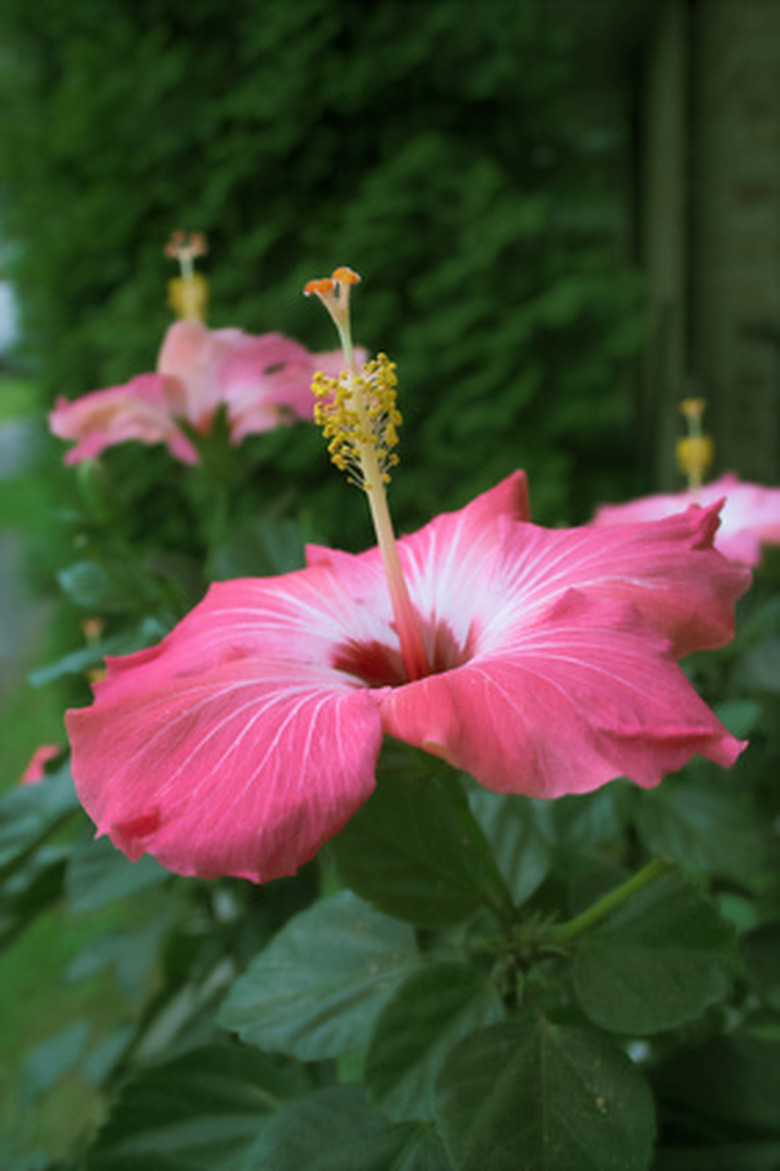The Leaves Of My Hibiscus Plants Are Turning Yellow With Black Spots
Often on a hibiscus plant, yellow leaves are caused by stress. However, black spots are caused by fungal infection or sometimes insect infestation. These conditions aren't unrelated, the tricky part is figuring out which condition came first. It could be that the plant became stressed and that left the hibiscus open to a fungal infection. Or, it could be a fungal infection or insect infestation that's stressing the plant. Either way, it should be treatable.
Check the Spots
Check the Spots
To distinguish between an infection and infestation, the first step is to check the spots. If you can brush them off the leaf, or if they smear when you try, the spots themselves are most likely sooty mold. This is a type of mold which grows on the honeydew left behind by insects such as aphids or scale bugs. Such spots will be on the tops of the leaves only, and they will be on the leaf but not part of it. There may also be spots of sooty mold on the stems and other parts of your hibiscus as well. Look for insects on the hibiscus to confirm. You might have aphids, which are small, light green insects which often live at the crux of stems or the undersides of leaves. Or, it might be mealy bugs or scale insects. Try handpicking them first, or use a spray of water to remove them, but be sure to do this in the morning so that the warm sun can dry up the moisture. Otherwise you'll risk a fungal infection on top of the other issues.
Fungal Infection
Fungal Infection
It would have to be a large infestation in order to stress the hibiscus enough to turn its leaves yellow. If you can only find a few insects — a few insects are natural and shouldn't harm your plant unless it is already weak — you may be dealing with a fungal infection. If the spots on your leaves do not wipe away, it's probably a fungal infection. However, fungal infections are often confined to small areas. If the black spots are only on a few leaves, that's probably not the source of the problem, but rather a symptom of a stressed and weakened plant. If the black spots are more widespread, with many of the leaves showing black spots, you may need to use a fungicide. However, insecticides and fungicides are a last resort, especially if the plant is weakened by other stress factors. Begin by removing the infected leaves and pruning your hibiscus to improve the air circulation through its branches. Never water from overhead, but instead from ground level. Fungal infections love moist conditions.
Chlorosis
Chlorosis
If neither the insect population nor the fungal infection is large or widely spread, they are likely symptoms of a stressed and weakened plant. A hibiscus can be stressed by any number of environmental factors: the most common are water, weather and sunlight. However, soil may be the easiest to diagnose. If your soil does not have the necessary nutrients or pH — which helps it to absorb those nutrients — your hibiscus may have chlorosis, a nutrient deficiency. This does present a slightly different yellowing of the leaves. With chlorosis, the leaves don't turn a solid yellow, but rather remain partly green and partly yellow. Figuring out what nutrients your hibiscus is lacking will require a soil test to determine the pH level and nutrient makeup of your soil.
Water
Water
Water can be another stressor for your plant. Hibiscus plants prefer to be moist, but not waterlogged and in hot, sunny climates they can need watering every day. However, too much or too little water can stress the plant and cause its leaves to turn yellow. Water more often on hot, sunny days and less on days that are cool or overcast. Check that the soil is beginning to dry before you water, to avoid overdoing it, but if the soil is so dry that it crumbles in your hand your hibiscus is probably not getting enough water. The soil should be moist enough to clump into a loose ball when you squeeze it and moister after you water it. Good drainage is also a must with these plants, because their roots do not like to be soaked with water for too long.
Weather and Sunlight
Weather and Sunlight
Wind and too much or too little sunlight can also stress a hibiscus. If your plant is getting too much sun, you'll also see white spots on the leaves, the plant equivalent of sunburn. Too little sunlight or too much wind is a diagnosis of exclusion. If your area isn't particularly windy, or the spot the hibiscus is in doesn't get much wind, you can safely rule that out. If it gets four to six hours of direct sunlight, and you're not seeing white spots on the leaves, you can probably rule out too little sunlight.
